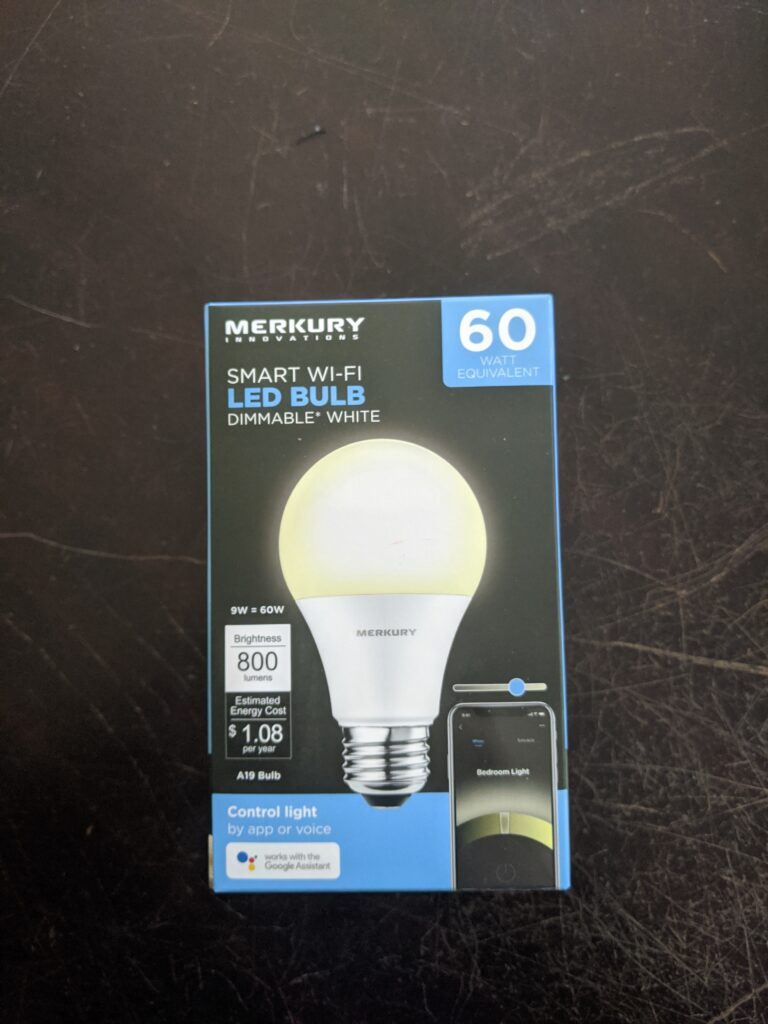Today I would like to talk about the Merkury Smart Wi-Fi LED Color Bulb. I have been planning on writing something about this for some time now and for some reason the opportunity never came about. I figured I would diverge from my new Smart Home Series a little bit to talk about one of the many different options that are out there.
Background
A while ago, I was walking through the local Walmart, and while walking down the midway near electronics I came across a bin filled with these Merkury brand smart LED bulbs. I decided that $12 was a reasonable price for a “smart” light bulb. You can now find a 2 pack of them on Amazon for $11.99.

I no longer have the Color LED packaging. So I am posting a picture of the white bulb which was only $9 at Walmart.
Impressions
My first impressons of the product was that it looked very polished like they knew what they were doing. Not all smart devices can claim that. After unpackaging the the bulb I found the setup instructions which directs you to download the Geeni app. Doing some research you will find that they are the same company.
As I have already been using Tuya / Smartlife app for my wifi enabled smart devices I tried to pair it to that app instead and it worked which is a plus for adoption.
One of the pros of using a WiFi smart device is that it uses your already exisiting Wifi network. Another plus is that you will not need a smart hub running in your house.
Once under management you these bulbs are able to work with your favorite voice assistant (Google Home, Alexa, Homekit). Also with the correct integrations (Tuya) you can integrate the control of these lightbubs into Home Assistant.
Final Thoughts
At such a low pricepoint and it’s ease of use, the Merkury Snart WiFi Light bulbs are an excellent addtion for the beginner smart home enthusiast. One word of warning about this product is that I would make sure to pick a well established company to host the brains of your operation (Tuya, SmartLife). There have seen many companies that support WiFi devices come and go over the years. I always prefer to pick a company that is been aroudn for a while.
I hope you found this post helpful and if so please consider sharing it with your friends.


